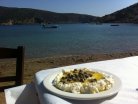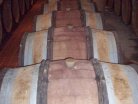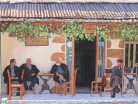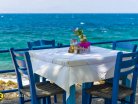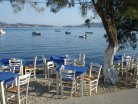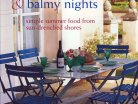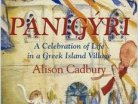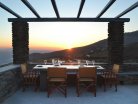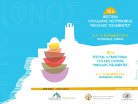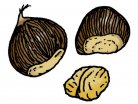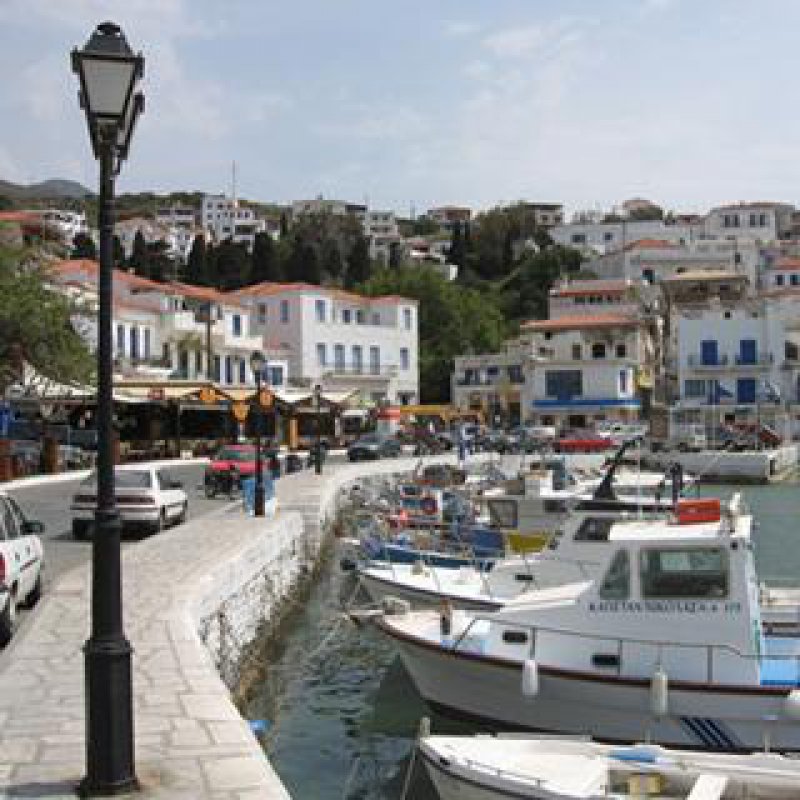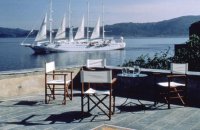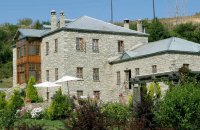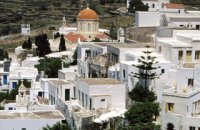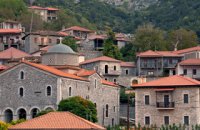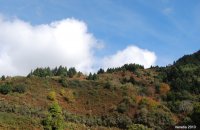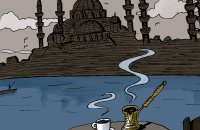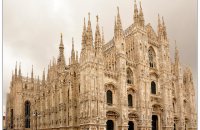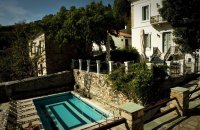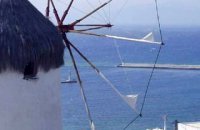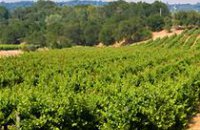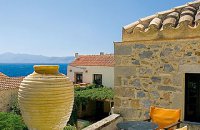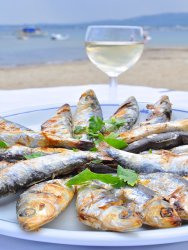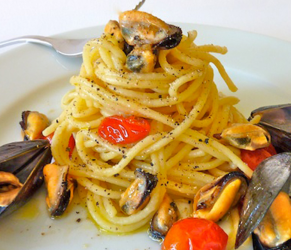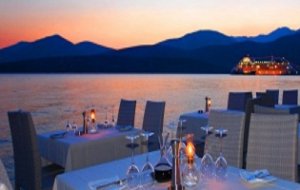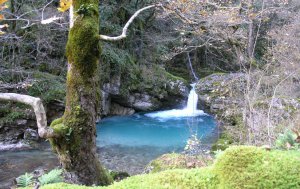I’m not going to extoll the praises of its dozens of unspoiled beaches either. Beautiful they are indeed, and you’ll find them in any guidebook. Instead, I want to introduce you to the hinterland of Andros, the lush interior of chestnut trees and orchards, villages without a single room to rent or postcard to buy, dovecotes and tiny churches, and field upon field of dark blue lupins.
Although it is a Cycladic island, and the second largest one at that, parts of Andros looks transported from Pelion. Even in dry years, springs and streams keep much of it green, with enough left over to fill thousands of bottles of sparkling and still Sariza water for export to the rest of Greece. Scattered along several ravines are the ivy-covered remains of stone watermills, which used to grind the island’s wheat, while a large waterwheel, motionless now, powered the 19th century pasta factory at Apikia.
Single-arched stone bridges cross rushing rivers at Stenies and Aladino, and more water spouts from the lions’ head fountains at Menites – all in the center of the island, not far from Hora. On this side of the island, the cypress, lemon and other trees are so dense, they mask all but the upper floors of the Venetian-era mansions on the lower slopes of Mt. Petalon, Andros’ highest mountain. Across from them, just under the ridge of a slightly lower chain of grey rocks, the stark white façade of the Panachrantos Monastery shines, unobscured by any foliage. New in the 10th century, this is the oldest and richest of the island’s six monasteries, but often Father Evdokimos is the only monk in residence. If you’re lucky and he’s not besieged by visitors, he may offer to cook you lunch – traditionally an excellent spaghetti with tomato sauce and local cheese.
The best way to explore Andros’s ravines and hillsides is, naturally, on foot, and a hiker’s map showing the location of watermills, bridges and monasteries is widely available. One of the most rewarding walks is from Kochylou above Korthi Bay to the wind-shattered Venetian castle, Palaiokastro, and then down the Dipotamo ravine following the kalderimia (cobbled mulepaths) and watermills to Sineti. Sturdy legs are required to climb up to Panachrantos from Aladino, but there is an alternative. The road from Korthi to Hora passes alongside one very well preserved watermill and detours up to Exo Vouni and directly on to the monastery. For an excursion that requires more driving than walking, a new road connects Hora with Arni, the most Pelionesque area in Andros, and the resort of Batsi. Even in August, Arni can have you reaching for your sweater at noon.






